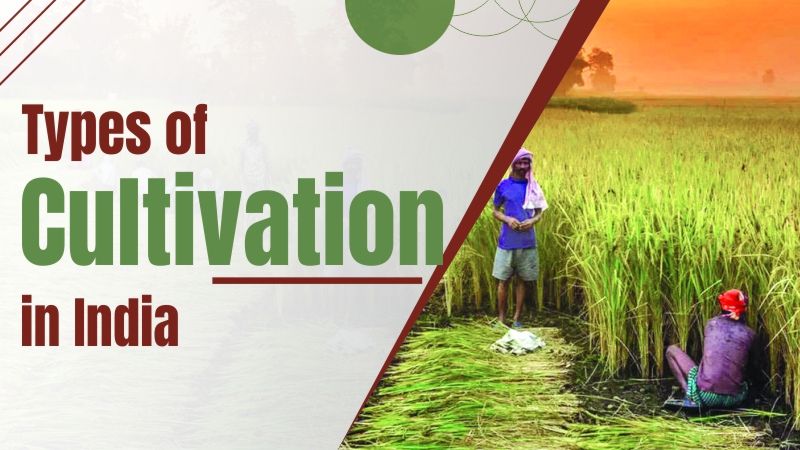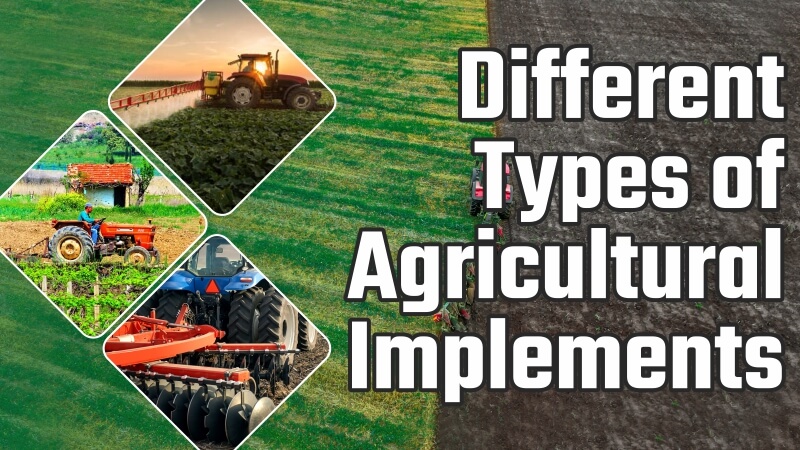Types of Farming in India: Traditional and Modern Methods
India, a country with a rich agricultural heritage, practices a variety of farming methods influenced by its diverse climates, topographies, and cultures. Broadly, farming in India can be categorized into traditional and modern methods. Each type has its own unique characteristics, advantages, and limitations. Let’s delve deeper into these farming types and understand where tomato farming fits in, along with the agricultural tools used in these practices.
Traditional Farming Methods
Traditional farming in India is characterized by methods that have been passed down through generations. These practices are typically eco-friendly and rely on indigenous knowledge and local resources. Some common types of traditional farming include:
1. Subsistence Farming:
- Subsistence farming is practiced on small plots of land where farmers grow crops to meet the needs of their own family. This type of farming relies heavily on human and animal labor, with minimal use of modern machinery.
- Crops: Staples like rice, wheat, maize, and pulses.
2. Shifting Cultivation:
- Also known as "slash and burn" agriculture, this method involves clearing a piece of forest land by burning, cultivating it for a few years until the soil fertility decreases, and then moving to a new plot.
- Regions: North-Eastern states such as Assam, Meghalaya, and Nagaland.
3. Mixed Farming:
- Mixed farming involves growing crops and raising livestock simultaneously on the same land. This ensures a balanced use of land resources and helps in maintaining soil fertility through natural means.
- Crops: Cereals, vegetables, fodder crops along with cattle, sheep, goats, and poultry.
4. Crop Rotation and Intercropping:
- Crop rotation involves growing different types of crops in the same area in sequenced seasons to maintain soil health and reduce pest infestations.
- Intercropping involves growing two or more crops in proximity. This can enhance soil fertility and reduce pests and diseases.
5. Organic Farming:
- Organic farming is a method that relies on natural substances and processes to cultivate crops. It avoids synthetic chemicals and fertilizers, focusing on maintaining ecological balance.
- Practices: Use of compost, green manure, biological pest control, and crop diversity.
Modern Farming Methods
Modern farming methods in India have evolved with advancements in technology, aiming to increase productivity, efficiency, and sustainability. These methods often require significant investment in infrastructure, machinery, and technology. Key modern farming methods include:
1. Commercial Farming:
- Commercial farming is large-scale farming geared towards producing crops for sale rather than for personal consumption. It involves the use of high-yield variety seeds, chemical fertilizers, pesticides, and sophisticated machinery.
- Crops: Cash crops like cotton, sugarcane, tobacco, and tea.
2. Intensive Farming:
- Intensive farming aims to maximize output from a given area of land using intensive inputs like labor, fertilizers, and irrigation. It is often practiced in areas with high population densities.
- Crops: Vegetables, fruits, and high-yield varieties of staple crops.
3. Precision Farming:
- Precision farming involves using advanced technologies such as GPS, IoT, and data analytics to optimize field-level management concerning crop farming. This method ensures efficient use of resources and maximizes yield.
- Tools: Soil sensors, drones, satellite imagery, and automated machinery.
4. Hydroponics and Aeroponics:
- These are methods of growing plants without soil, using mineral nutrient solutions in an aqueous solvent (hydroponics) or air/mist environment (aeroponics). These methods are gaining popularity in urban areas with space constraints.
- Crops: Leafy greens, herbs, tomatoes, and strawberries.
5. Genetically Modified Crops (GM Crops):
- GM crops are developed by altering the genetic material of plants to achieve desired traits such as pest resistance, herbicide tolerance, and improved nutritional content.
- Crops: Bt cotton, GM mustard (under trial).
https://khetigaadi.com/blog/types-of-cultivation-farming-in-india/Types of Farming in India: Traditional and Modern Methods
India, a country with a rich agricultural heritage, practices a variety of farming methods influenced by its diverse climates, topographies, and cultures. Broadly, farming in India can be categorized into traditional and modern methods. Each type has its own unique characteristics, advantages, and limitations. Let’s delve deeper into these farming types and understand where tomato farming fits in, along with the agricultural tools used in these practices.
Traditional Farming Methods
Traditional farming in India is characterized by methods that have been passed down through generations. These practices are typically eco-friendly and rely on indigenous knowledge and local resources. Some common types of traditional farming include:
1. Subsistence Farming:
- Subsistence farming is practiced on small plots of land where farmers grow crops to meet the needs of their own family. This type of farming relies heavily on human and animal labor, with minimal use of modern machinery.
- Crops: Staples like rice, wheat, maize, and pulses.
2. Shifting Cultivation:
- Also known as "slash and burn" agriculture, this method involves clearing a piece of forest land by burning, cultivating it for a few years until the soil fertility decreases, and then moving to a new plot.
- Regions: North-Eastern states such as Assam, Meghalaya, and Nagaland.
3. Mixed Farming:
- Mixed farming involves growing crops and raising livestock simultaneously on the same land. This ensures a balanced use of land resources and helps in maintaining soil fertility through natural means.
- Crops: Cereals, vegetables, fodder crops along with cattle, sheep, goats, and poultry.
4. Crop Rotation and Intercropping:
- Crop rotation involves growing different types of crops in the same area in sequenced seasons to maintain soil health and reduce pest infestations.
- Intercropping involves growing two or more crops in proximity. This can enhance soil fertility and reduce pests and diseases.
5. Organic Farming:
- Organic farming is a method that relies on natural substances and processes to cultivate crops. It avoids synthetic chemicals and fertilizers, focusing on maintaining ecological balance.
- Practices: Use of compost, green manure, biological pest control, and crop diversity.
Modern Farming Methods
Modern farming methods in India have evolved with advancements in technology, aiming to increase productivity, efficiency, and sustainability. These methods often require significant investment in infrastructure, machinery, and technology. Key modern farming methods include:
1. Commercial Farming:
- Commercial farming is large-scale farming geared towards producing crops for sale rather than for personal consumption. It involves the use of high-yield variety seeds, chemical fertilizers, pesticides, and sophisticated machinery.
- Crops: Cash crops like cotton, sugarcane, tobacco, and tea.
2. Intensive Farming:
- Intensive farming aims to maximize output from a given area of land using intensive inputs like labor, fertilizers, and irrigation. It is often practiced in areas with high population densities.
- Crops: Vegetables, fruits, and high-yield varieties of staple crops.
3. Precision Farming:
- Precision farming involves using advanced technologies such as GPS, IoT, and data analytics to optimize field-level management concerning crop farming. This method ensures efficient use of resources and maximizes yield.
- Tools: Soil sensors, drones, satellite imagery, and automated machinery.
4. Hydroponics and Aeroponics:
- These are methods of growing plants without soil, using mineral nutrient solutions in an aqueous solvent (hydroponics) or air/mist environment (aeroponics). These methods are gaining popularity in urban areas with space constraints.
- Crops: Leafy greens, herbs, tomatoes, and strawberries.
5. Genetically Modified Crops (GM Crops):
- GM crops are developed by altering the genetic material of plants to achieve desired traits such as pest resistance, herbicide tolerance, and improved nutritional content.
- Crops: Bt cotton, GM mustard (under trial).
https://khetigaadi.com/blog/types-of-cultivation-farming-in-india/







